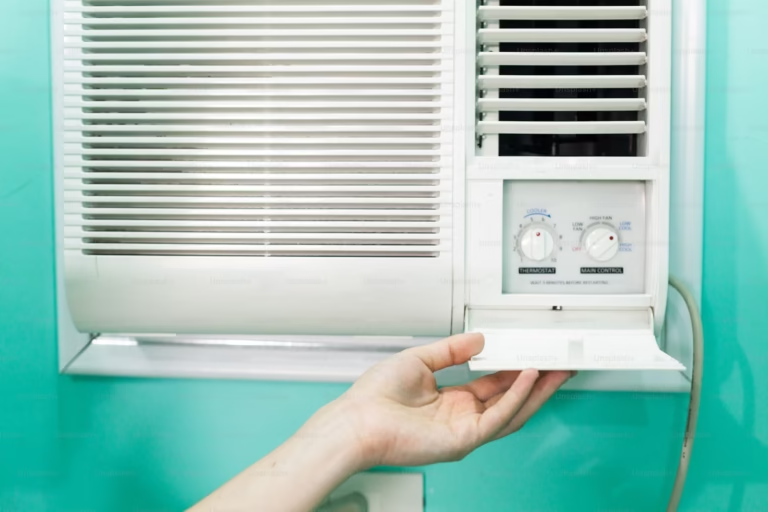An air conditioner (AC) is one of the most important appliances in your home, especially during hot summer months. To ensure it performs efficiently and lasts longer, regular maintenance is essential. Moreover, knowing how to troubleshoot common problems can save you time, money, and inconvenience.
This guide covers everything you need to know about air conditioner maintenance and troubleshooting, so your AC stays in peak condition all year round.
1. Why AC Maintenance is Important
Regular maintenance offers multiple benefits:
- Improves energy efficiency
- Extends the lifespan of the unit
- Ensures better air quality
- Prevents unexpected breakdowns
- Reduces electricity bills
Ignoring maintenance can lead to costly repairs or even the need to replace the entire unit prematurely.
2. Routine Maintenance Tasks (DIY)
Here are the maintenance tasks you can perform on your own:
a. Clean or Replace Air Filters
- Frequency: Every 15–30 days (for dusty environments) or every 2–3 months.
- Dirty filters block airflow and reduce efficiency.
- Some filters are washable; others need to be replaced.
b. Clean the Evaporator and Condenser Coils
- Frequency: At least once a year.
- Dust buildup on coils reduces heat exchange, lowering efficiency.
- Use a soft brush or a coil cleaner spray.
c. Inspect the Fins
- The aluminum fins on the evaporator and condenser coils can bend.
- Use a fin comb to straighten them carefully.
d. Check the Condensate Drain
- Clogged drains can cause water leaks or high humidity.
- Use a pipe cleaner or flush with a mix of bleach and water.
e. Keep the Outdoor Unit Clean
- Remove leaves, debris, and dirt from around the condenser unit.
- Ensure at least 2 feet of clearance on all sides for proper airflow.
f. Check the Thermostat
- Calibrate or upgrade to a programmable thermostat to maintain consistent temperature.
3. Professional Maintenance Checklist
It’s best to schedule professional servicing at least once a year. A technician will:
- Inspect refrigerant levels and top up if necessary
- Test for refrigerant leaks
- Measure airflow and temperature accuracy
- Check the electrical components and connections
- Inspect motor, compressor, and belts
- Deep-clean internal components
This annual servicing helps catch issues early and ensures smooth performance.
4. Common AC Problems and Troubleshooting Tips
Here are some of the most frequent issues and how you can deal with them:
a. AC Not Turning On
Possible Causes:
- Tripped circuit breaker
- Faulty thermostat
- Loose wiring
What to Do:
- Check the power supply and breaker.
- Replace batteries in the thermostat.
- If nothing works, call a technician.
b. AC Not Cooling Properly
Possible Causes:
- Dirty air filters
- Low refrigerant levels
- Faulty compressor
- Clogged condenser coils
What to Do:
- Clean/replace filters.
- Ensure windows and doors are closed.
- If the problem persists, get refrigerant and coils checked by a technician.
c. Water Leaking from Indoor Unit
Possible Causes:
- Blocked or disconnected drain pipe
- Frozen evaporator coil
- Improper installation
What to Do:
- Clean the drain pipe.
- Check for ice buildup and allow it to melt.
- If installation seems off, contact a professional.
d. Strange Noises from the AC
Types of Noises:
- Buzzing: Electrical issue
- Clicking: Relay problem
- Banging: Loose or broken parts
- Hissing: Refrigerant leak
What to Do:
- Turn off the AC and consult a technician immediately.
e. Bad Odor from AC
Possible Causes:
- Mold or mildew in the filter or ducts
- Clogged drain line
What to Do:
- Clean filters and ducts.
- Use an AC cleaning spray or contact a professional for deep cleaning.
f. AC Frequently Turns On and Off (Short Cycling)
Possible Causes:
- Dirty condenser coils
- Oversized AC
- Low refrigerant
What to Do:
- Clean coils and ensure thermostat settings are correct.
- If the problem continues, call a technician.
5. Preventive Tips to Avoid Major AC Issues
Here are some preventive practices to keep your AC running smoothly:
- Use a voltage stabilizer to protect against power surges.
- Avoid running the AC with open windows; this forces the unit to work harder.
- Set the thermostat between 24°C and 26°C for optimal cooling and energy saving.
- Don’t block indoor vents with furniture or curtains.
- Run ceiling fans alongside the AC to circulate cool air.
6. When to Call a Professional
You should contact a professional technician when:
- There’s a refrigerant leak or unusual hissing sound
- Your AC trips the circuit breaker repeatedly
- The compressor fails or makes loud noises
- There’s an electrical smell (burning wire)
- You’ve tried all basic troubleshooting and the issue persists
Trying to fix electrical or refrigerant issues yourself can be dangerous and may void the warranty.
7. Estimated Costs for AC Maintenance and Repair
| Service Type | Average Cost Range |
|---|---|
| Basic servicing (cleaning) | $30 – $70 |
| Deep cleaning (chemical wash) | $50 – $100 |
| Gas refill (refrigerant top-up) | $80 – $150 |
| Compressor repair/replacement | $200 – $600 |
| Thermostat replacement | $50 – $150 |
Note: Costs vary by location and AC brand.
8. Conclusion
Regular air conditioner maintenance not only keeps your unit running efficiently but also helps you avoid expensive repairs. Simple DIY tasks like cleaning filters and checking the thermostat can make a big difference. For more complex issues, always rely on professional help.
By following this guide, you’ll ensure better cooling performance, energy efficiency, and a longer lifespan for your AC. Treat your air conditioner well, and it will return the favor during those scorching hot days.

